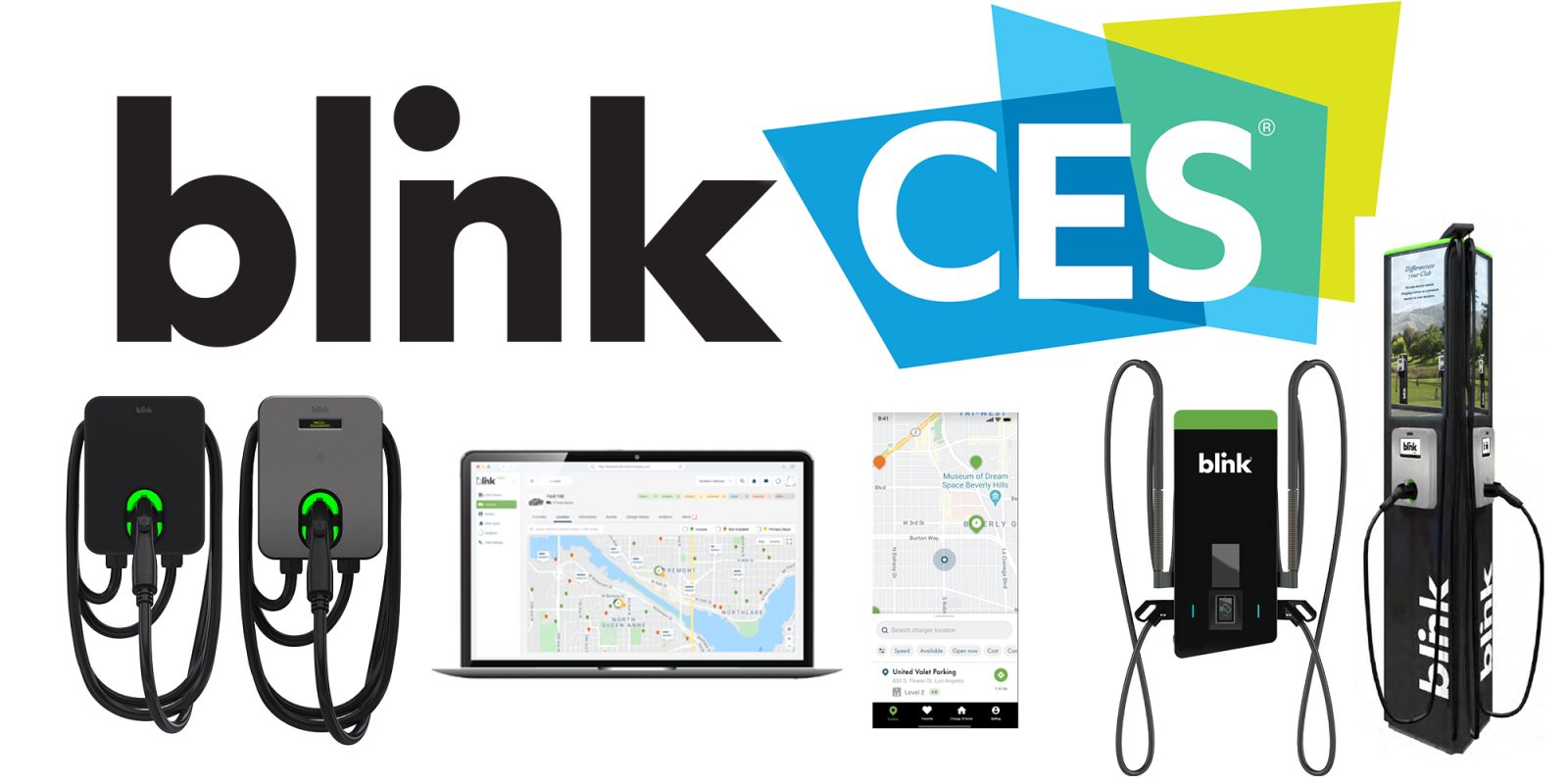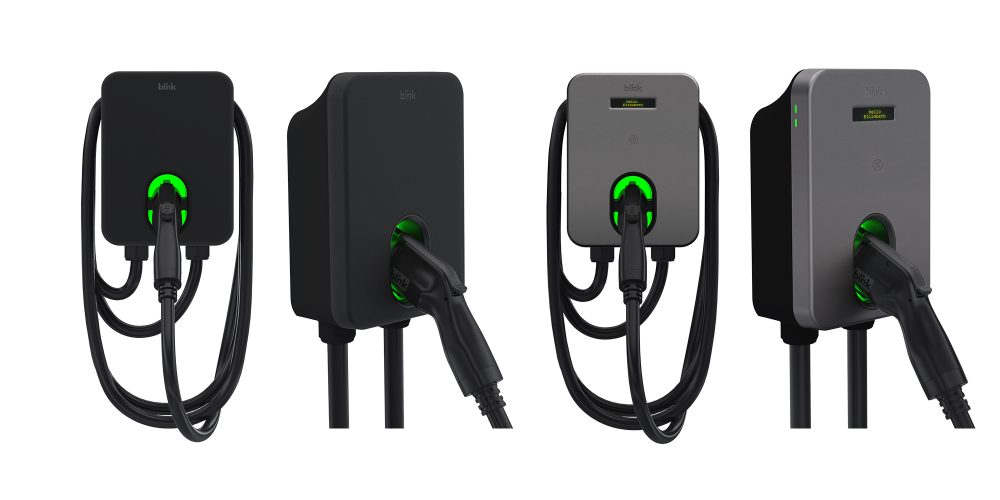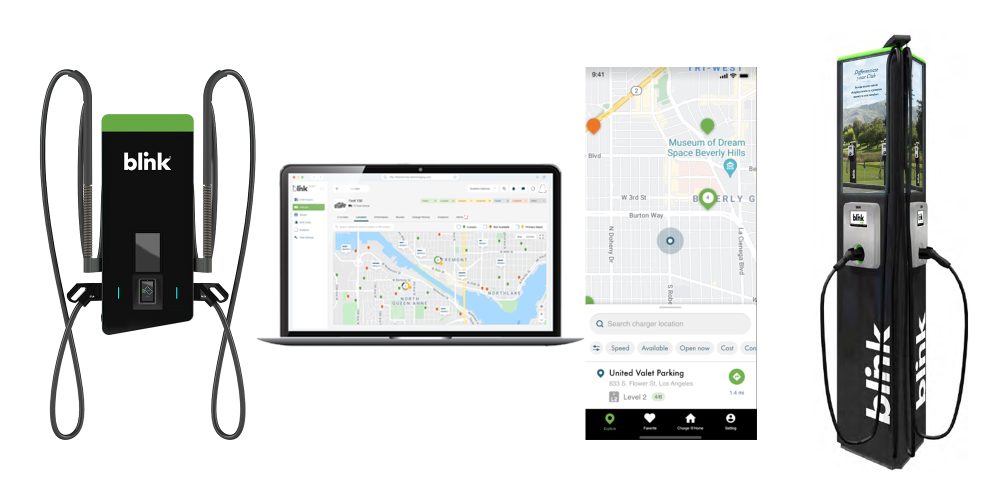
EV charging network, Blink, kicked off this year’s Consumer Electronics Show (CES) by sharing news of seven new charging products, the largest unveiling in its thirteen year history. Blink products include multiple versions of fleet and home chargers, as well as new public chargers and software for customers.
Blink Charging Co. ($BLNK) is an international EV charging network operating over 30,000 ports across thirteen different countries. In addition to charging hardware and services, the Blink Network uses proprietary, cloud-based software that operates and tracks charging stations connected to its network and the charging data they provide.
Blink charging’s strategy promotes mass EV adoption by supporting EV drivers with charging solutions everywhere, whether its at home, work, a public station, or even a fleet depot.
In mid-December, Blink teased an upcoming suite of new charging products to be unveiled at this years Consumer Electronics Show in Las Vegas. With its latest announcement coinciding with CES, we now have a first glimpse at seven new charging solutions from Blink.

Blink introduces largest suite of charging solutions to date
While the public will not get to enter CES 2022 until January 5th, we were able to get a first look at Blink’s new charging products early, and it’s quite a haul.
The first new charging product is the HQ 200, Blink’s next generation of home chargers. The 50 amp charger comes in two models – The HQ 200 basic and the HQ 200 Smart, which is also Wi-Fi enabled. Both versions feature Vehicle-to-Grid (V2G) technology allowing you to send energy back to your home or grid with the proper electrical setup.
The new charger also features load sharing capabilities, meaning multiple EV’s can charge at your home on one circuit. With a NEMA Type 3R plug and a lockable SAE J1772 charger, installation should be relatively easy.
A commercial counter to the HQ 200 is the MQ 200, a similar 50 amp charger designed for fleet and multi-unit applications, offering charge rates of 9.6 kW. This charger features fully-integrated a fleet management portal (more below), and local load management across two or more chargers.
What’s most interesting about the MQ 200 is its Plug & Charge capability, allowing for the charging station to identify an EV and its encrypted account through the plug itself, alleviating the need for an app or charge card.

Blink’s new public chargers and software solutions
In addition to the private chargers listed above, Blink has introduced two new public charging solutions. The first is the DC Wall 50 kW charger, a compact and lightweight DC fast charger that can be easily installed on a wall or as a pedestal.
This new DCFC features 150 amps of output and V2G technology, and can charge two EVs simultaneously through its CCS ports. Unfortunately, the DC Wall Charger doesn’t come with Plug & Charge, so a member card, RFID credit card, or mobile app is required.
Blink’s new Vision IQ 200 will combine EV fast charging with ads on either one or two 30″ LCD screens, offering revenue shares for both charging and advertising. The Vision IQ 200 is equipped with one or two 80-amp Level 2 chargers delivering up to 19.2 kW charge speeds, plus 4G LTE and Wi-Fi connectivity.
In addition to new hardware, Blink has also introduced new software solutions for its customers. This includes a Fleet Management Portal which offers fleet managers a new dashboard to track EV charging and load management, charger status, as well as the status of vehicles and drivers. The real-time tracking should help future fleets run at their most efficient pace.
Lastly, the company will introduce a new Blink Mobile App designed to make both public and home charging easier. Customers can find public chargers nearby, reserve their spot, and save their favorites for easy access. At home, Blink customers can control their charger from anywhere and schedule charges to take advantage of off-peak hours.
Blink will officially unveil these products during a press conference live at CES on January 5th at 11:15AM PST. Here’s the link if you’d like to tune in.
FTC: We use income earning auto affiliate links. More.



Comments